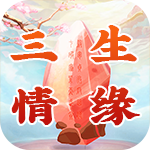1. 求關于肢體語言的英語句子20句
Keeping eye contact (眼神的交流)
Staring blankly(茫然的眼神)
Blinking(眨眼)
Winking(使眼色)
Gtaring(盯)
Bags under one's eyes(眼袋)
Cross-eyed(對眼)
Glassy eyes(呆滯的目光)
Icy stare(冰冷的眼神)
Rolling one's eyes(翻白眼)
Eyes spitting fire(火冒三丈)
Face and head
Twitching one's nose(皺鼻子)
sneer(嘲笑)
Snicker(竊笑)
Pout(噘嘴)
Don't look down!(別低頭)
Kissing(親吻)
Licking one's lips(舔嘴唇)
Nodding and shaking one's head(點頭和搖頭)
Poker face(無表情的面孔)
Don't be shy!(別害羞!)
Raising one's eyebrows(揚眉毛)
Tilting one's head(探頭)
Hand
Bullshit!(胡說!)
Patting yourself on the back(拍拍肩)
Good luck(祝你好運!)
Telling a lie(說謊)
Beckoning(招手)
Shaking hands(握手)
High five(互相擊掌)
I forgot!(我怎麼忘了呢?)
I've got an idea!(我有一個好主意!)
Knock on wood(敲木頭)
You are a loser!(你輸了!)
Make a wish(許愿)
Ok sign(Ok手勢)
Over my head(我聽不懂!)
Palm up(手心朝上)
Plam down(手心朝下)
He is crazy!(他真是瘋了!)
Snapping one's fingers(打響指)
Just so-so(馬馬虎虎)
Thumbs down(大拇指朝下)
Thumbs up(豎起你的大拇指)
Victory(勝利)
Whatever!(隨便!)
Whistle(吹口哨)
Body and feet
Comfort zone/Personal space(自在空間)
Tapping one's feet(顛腳)
Shrugging one's shoulders(聳聳肩)
2. 求一篇用肢體語言來表達喜怒哀樂的英語作文
we have two kinds of lanuguages--spoken language and body language. if you observe carefully ,you will notice that some of the body languages share the same meaning in different cultures. for example, nodding head means"yes" while shaking head means "no".but at the same time, different cultures use different ways to show their friendliness, for example, in china,we shake hands the first time we meet a friend, but Japanese bow and most people from western countries hug each other. besides, there are still many body languages, so, knowing about that would be helpful for us to communicate with people from other nations.。
3. 【肢體語言BodyLanguage英語作文】
When you learn a foreign language, you must learn more than the vocabulary and the grammar. To communicate successfully, you must also learn the non-verbal language, or body language of that culture. Body language is a term used to describe facial expression, gestures, and other movements of the body that send messages. This means of communication is so important that we may actually say more with our movements than with words.當你學習一門外語的時候,你必須學習詞匯和語法以外的東西。
為了能夠順利溝通,你必須學會那一文化的肢體語言。 肢體語言 是用來描述面部表情,姿勢以及其他傳遞信息的身體動作的術語。
這種溝通方式很重要,因而我們實際上可能用動作比用話語表達的更多。For some messages, words are not enough. Speaking a foreign language is sometimes difficult because we may not understand the non-verbal signals of another culture. For example, nodding the head up and down is a gesture that may communicate different messages in different parts of the world. In North America, it means I agree . In the Middle East, nodding the head down means I agree and up means I disagree . In a conversation among Japanese it often simply means I m listening .對于有些信息,言語是不夠的。
有時候說一門外語很難,因為我們可能不理解另一文化的非語言信號。比如,上下點頭這一姿勢在世界不同的地方表達的信息也是不一樣的。
在北美,這一姿勢意味著 我同意 。在中東,點頭表示 我同意 ,而抬頭表示 我不同意 。
在日本人的對話當中,它通常只是表示 我在聽 。Eye contact is also very meaningful, but it can also mean different things in different countries. In some Spanish-speaking countries, children show respect to an old person by not looking directly into the person s eye during a conversation. In other cultures, looking into a person s eye is expected. For example, if you don t do it in the United States, people may think that you are afraid, embarrassed, or angry. In the Middle East, direct eye contact in a conversation is more continuous than in many other parts of the world. People who are not used to this may feel uncomfortable.眼神接觸也很有意義,但是它在不同的國家也可以表示不同的意思。
在一些說西班牙語的國家,孩子們在與老人的對話中通過不直視對方的眼睛來對對方表示尊敬。在其他文化中,人們期待別人直視眼睛。
比如,在美國,如果你不這樣做,人們可能會認為你害怕,尷尬或者生氣。在中東,對話中直接的眼神接觸比世界上很多其他地方更持久。
不習慣的人可能會覺得不舒服。
4. 肢體語言(英語作文)
You must have smiled to your friend when you meet him again after a long time. HoweverPeople usually communicate with others by spoken words, body language is as important as spoken language, body language is widely used in our daily life, you gave him a smile to cheer him up and at that moment the smile is better than any words I think. Such as when you find your friend is depressed.
Have you ever used body language to communicate with others. As well as when you are surrounded by noises. Smile is body language. And it is obvious that through human being's history.
As a conclusion, people used body language to communicate with others frequently, you cannot make yourself understood by words so you use gestures which are body language to express your ideas? I think the answer is definitely sure
5. 身體語言的英語短文~~
Spoken language is usually used to communicate with each other. As a matter of fact, voiceless language (無聲語言) , especially body language, is as important as spoken language. Long before spoken language was used, muman had bagun to talk to each other with body language.
Communication by means of movement and gesture (手勢) helps one read what another want to tell him. A sweet smile, for example, can calm your friende who is unhappy. When there is too much noise, it is easier to communicate using body language.
When people show kindness with each other, they turn their upper bodies toward each other, with their shoulders squarely parallel (端平肩膀) and there is more eye contect. If they disagree, they unconsciously turn their bodies away from each other.
Therefore, words cannot tell you what body language can.


















